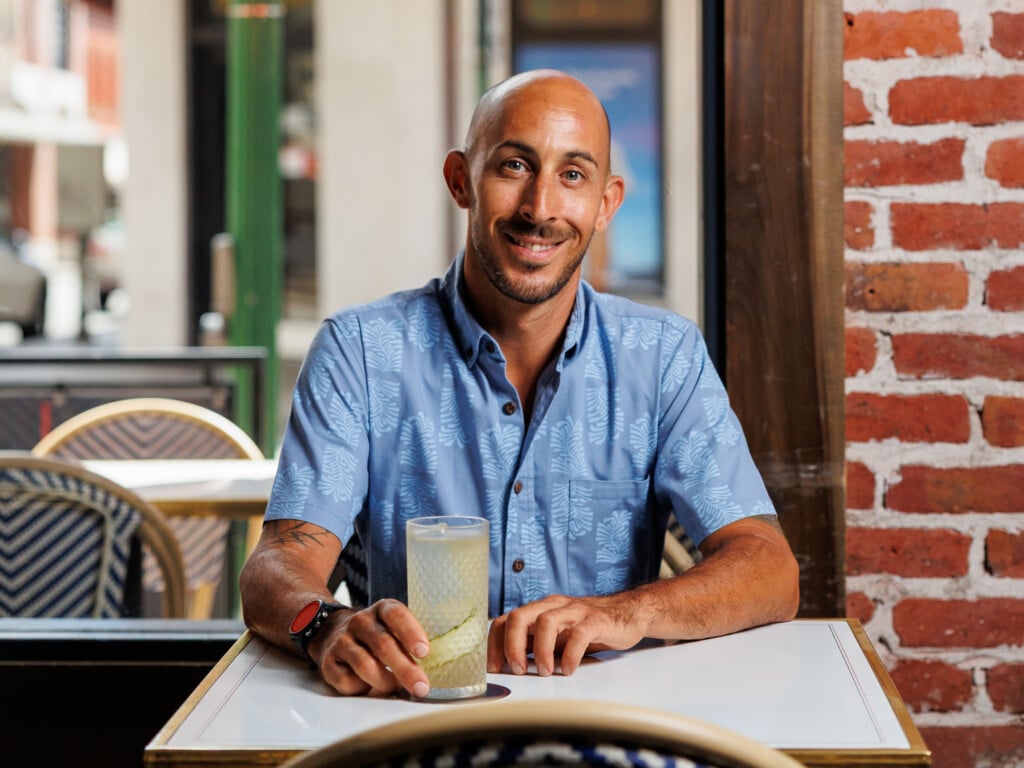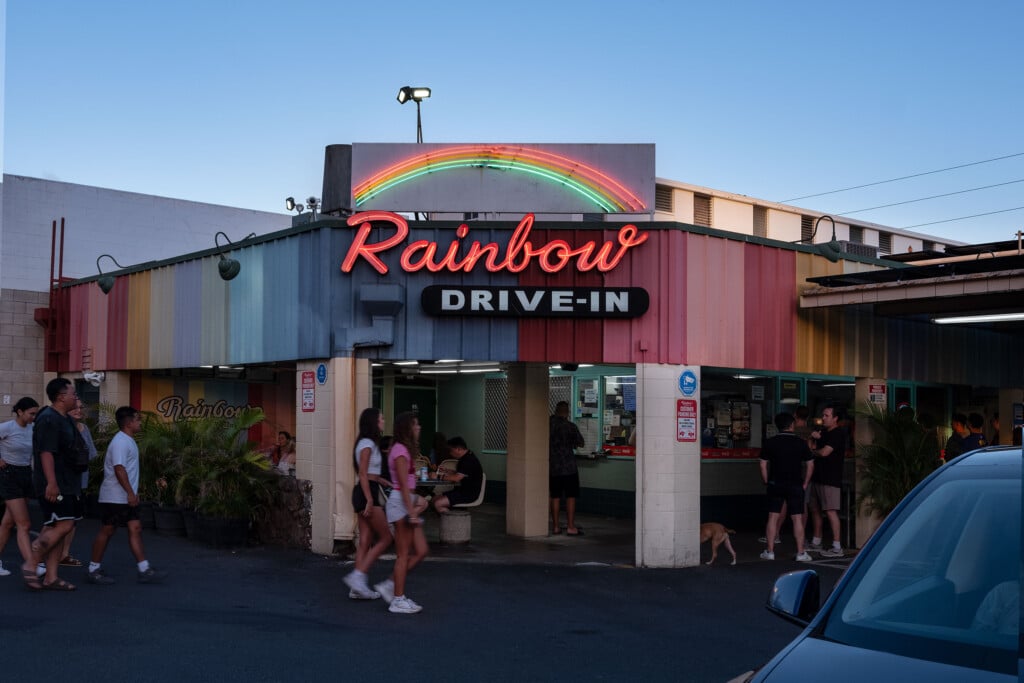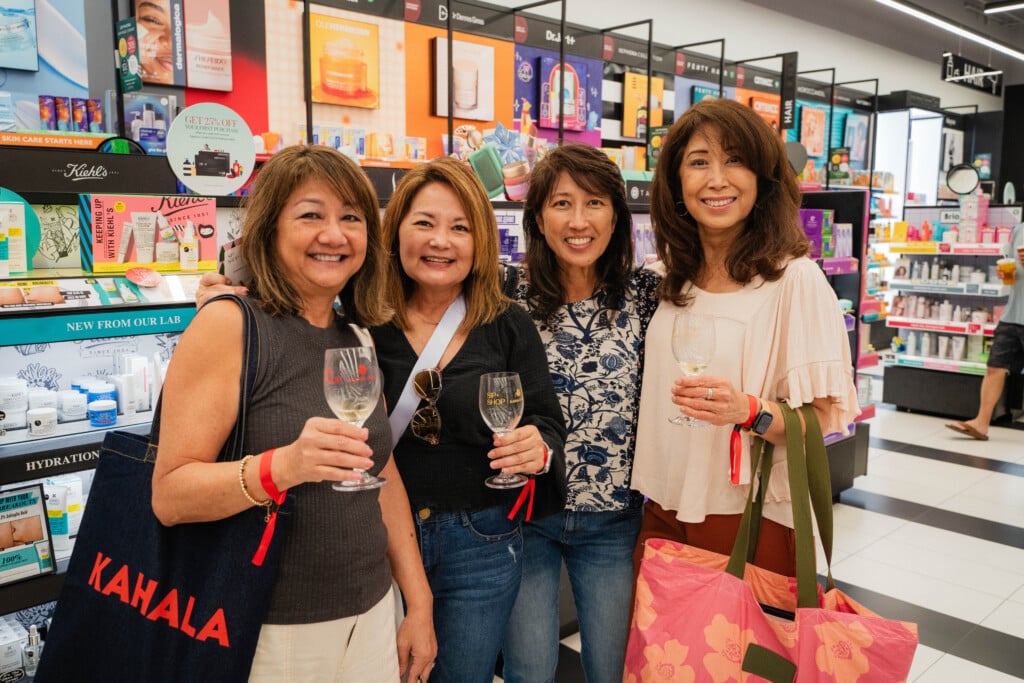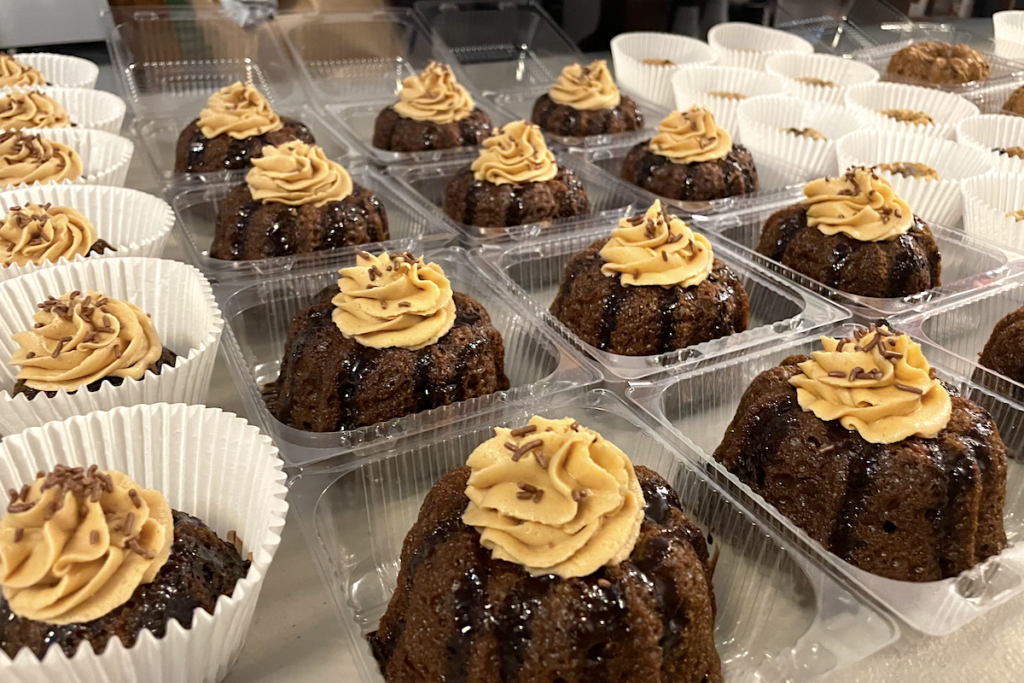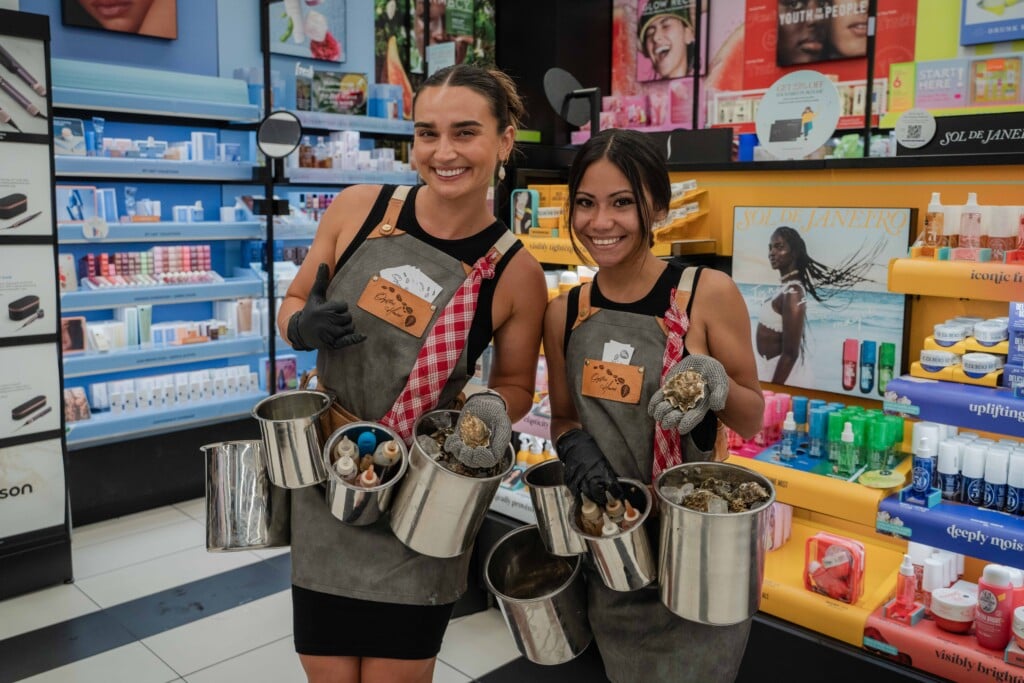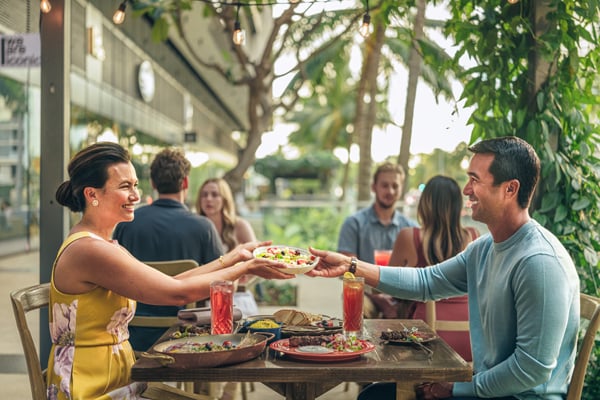Japan’s New Wave of Eateries in Honolulu
Driven by craft and quirk, they’re expanding the boundaries of Japanese food on O‘ahu.
The early hints were subtle. Maybe it was the cup of spring-green matcha, hand-whisked with water heated over charcoal in a traditional brazier and paired with a sphere of miso gelato. Or maybe it was the warm musubi, crafted to order at what could be mistaken for a high-end sushi counter and served on a woven bamboo tray. Or was it the sushi bowl crowned with Hokkaido scallops and translucent ikura pearls?
At some point, the separate arrivals coalesced into a new reality: Japanese eateries in Honolulu have ushered in a new wave. No longer bound by the familiar genres of big-menu teishoku restaurants, ramen chains or our post-pandemic sushi omakase surge, players around the city are taking Japanese food in different directions. Some elevate familiar dishes with new levels of craft. Others reflect individual quirks and passions. Most are tiny, run in some cases by couples or even lone proprietors.
Given Japan’s reverence for kodawari, a pursuit of craft that can span a lifetime, quirk and passion have long spurred eateries in the motherland. Japanese chefs who brought kodawari into Hawai‘i kitchens have worked mostly in sushi and other high-end cookery. Its recent conjunction with humbler foods here may date from late 2023, around the time Gyoza Studio Kubota opened on Kapahulu Avenue. In 2024, other outside-the-bento-box establishments followed:
Cha to Gelato Zen—a slow bar of handcrafted Japanese tea drinks and gelato in Kapahulu.
Gohan—a made-to-order musubi restaurant on South King Street whose simple to luxe fillings include freshly grilled unagi and yuzu-tinged ikura.
Café Lapin—artful matcha drinks with loaded toasts and sandos, on Sheridan Street.
Totoya—a 16-seat counter in Kaimukī specializing in mounded Hokkaido-style sushi bowls.
And in summer 2025:
Onigiri Onibe, Honolulu’s second craft musubi shop, opened in Downtown in June.
Totoya expanded, with a new location near Ala Moana Center.
Tea Bar Zen began a late-night residency inside Cha to Gelato Zen, with cocktails that combine Japanese tea with spirits.
Tororo appeared at King and Ke‘eaumoku streets, a modest izakaya named for its owner’s favorite dish of grated mountain yam.
“People are going to Japan more than before because the yen is cheap, so they know Japanese food,” says Megumi Albritton, who opened CakeM in 2016. Last November, she made space in the airy patisserie for Café Lapin. “Hawai‘i people are experiencing more kinds of Japanese food, and they want it.”
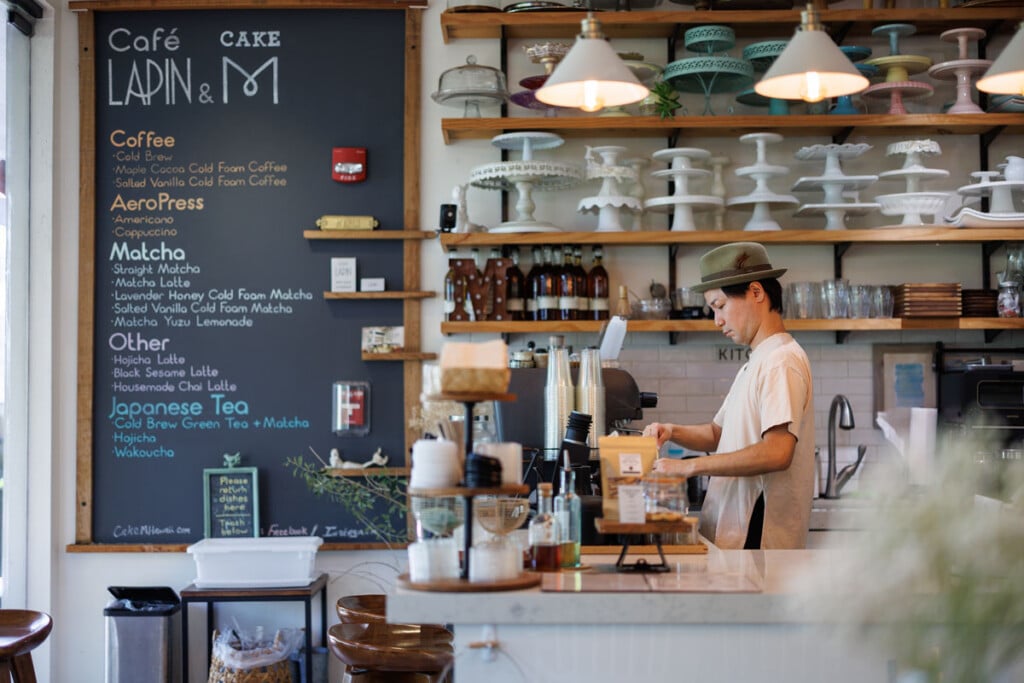
Café Lapin
At 808 Center on Sheridan Street, the third flight of stairs delivers you to the door of CakeM and Café Lapin, a light-filled nook of wood-grain tables and stacked cake plates behind floor-to-ceiling glass. On one side are Albritton’s Mont Blancs, chocolate cakes, fresh berry tarts and strawberry shortcakes. On the other, below a chalkboard menu of matcha, hojicha and coffee drinks, Yuji Sakabe adds Lā‘ie vanilla syrup to the milk he’s frothing for his Salted Vanilla Cold Foam Matcha.
Sakabe fell in love with cafés in New York City. At the height of the city’s matcha craze a decade ago, a fellow Japanese expat with a passion for roasting coffee beans ignited in him a love of slow café culture. The mix of it all—craft tea, craft coffee, the atmosphere and vibe—turned the wedding florist into a barista. In Hawai‘i a few years later, when Albritton asked if he knew anyone who might want to open a café inside CakeM, Sakabe stepped up.
“We have a good effect on each other. His customers see my sweets, my customers see his drinks, they’re like OK, let’s get drinks and sweets together,” Albritton says. “But it’s funny. When I went to Tokyo in April, there was a long line of foreigners at a matcha shop in Harajuku. No Japanese. And they were waiting for matcha latte, matcha floats, straight matcha.”
But likely not Salted Vanilla Cold Foam Matcha. Sakabe’s signature drink is the most prominent feature of the café’s Instagram feed of customer reposts. Behind the counter, he pours a frothy cloud onto emerald depths of milky matcha and sprinkles pink Himalayan salt crystals down the middle. A parallel line of dried petals in deep pinks and purples follows, and in the hands of a florist, the drink becomes art.
“I see the practice of making coffee as a form of meditation,” Sakabe says. “It motivates me to know that my drinks and my café can become a part of someone else’s daily life.”
808 Sheridan St., 3F, Ala Moana, lapinllc23.com, @lapin_llc
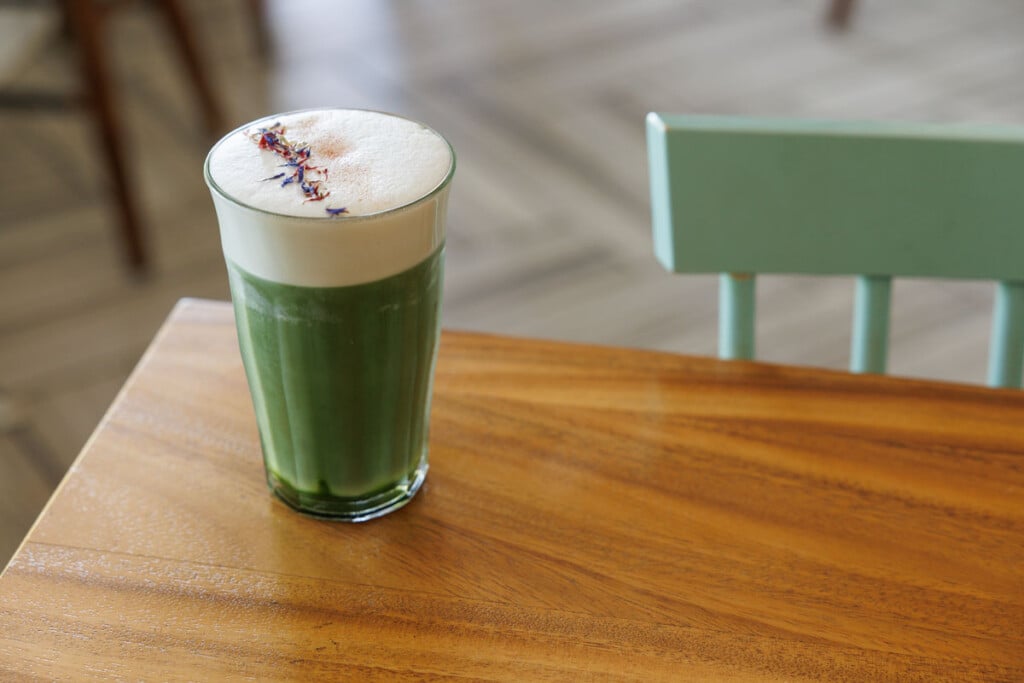
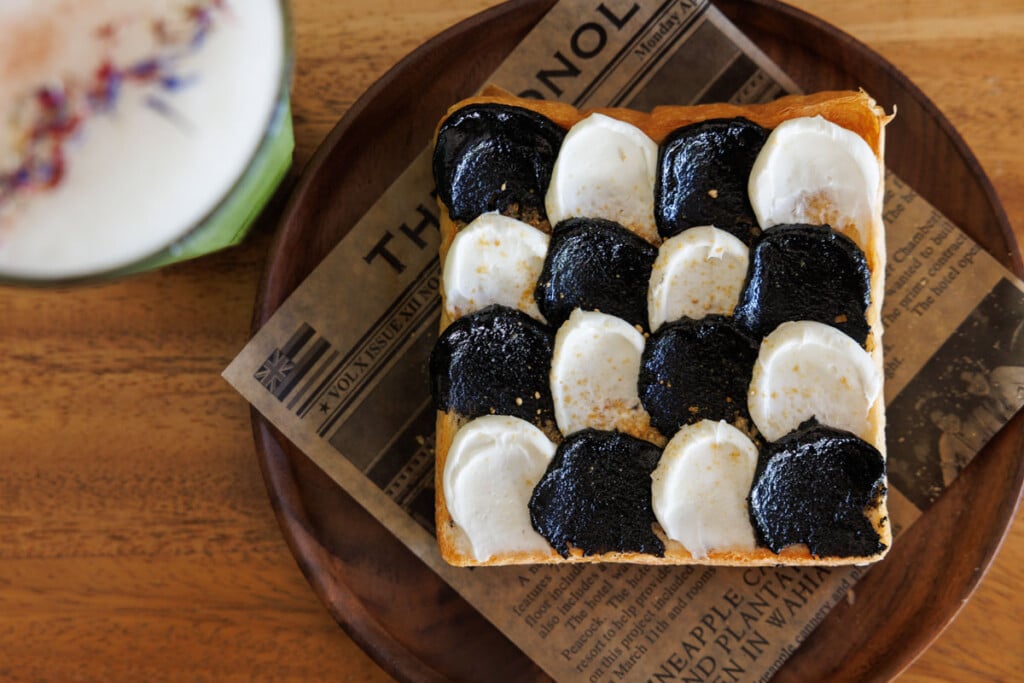

Too matcha love
Like anime, sushi and other things Japanese, appetites for matcha have gone global. For the first time, rising demand worldwide has created a shortage of the antioxidant-rich tea even as Japanese farmers produce more than ever. The intense heat of recent summers in tea-growing regions is also hurting harvests. Not to worry (too much): Farmers are planting more—and the new shrubs should be ready for harvest in about five years.

Onigiri Onibe
My first visit to Downtown’s new craft musubi bar ends in failure. I inch forward in a line snaking out of Onigiri Onibe on Alakea Street, only to learn at the register that ingredients for made-to-order musubi, aka onigiri, have sold out for the day. So have the baskets of premade rice balls on the counter. Whether for its dizzying menu of 45 fillings—including yuzu salmon, chicken teriyaki mayo, braised kakuni pork belly and mentaiko with fresh egg yolk—or the promise of fluffy rice cooked in donabe earthenware pots, the lunch crowd has overwhelmed this tiny newcomer.
Downtown Honolulu at midday is not for the fainthearted. Between 11:30 and 12:30, time-crunched workers emerge from office towers and swarm the district’s takeout counters like locusts in aloha shirts. It takes two more visits for me to understand why Onibe, a musubi restaurant with a single location in Japan, would expand to the hungry heart of a city in another country 4,400 miles away. In Fukuoka, where Onibe just celebrated its second anniversary, it operates from 8 p.m. to 4 a.m. with high balls and a secondary menu of appetizers. In Honolulu, where soft-opening hours bracket the lunch hour, Onibe is the start of a vision “to spread Japan’s musubi culture to the world,” general manager Takuma Suga explains. A second shop has since opened in Saitama just outside Tokyo.
I get my first taste on my next visit. At 1 p.m. there’s no line, but pressed for time, I skip the ritual of watching workers scoop fresh, fluffy mounds from the donabe rice pots, shape them to order with quick cupping motions and layer swaths of fillings across their surfaces. Mine is a premade musubi. The rice grains, sweet and loosely packed, are blanketed by a shiso leaf bathed with robust, deeply satisfying miso beef.
The following week, I take a seat at the counter. Onibe has found its groove. At peak crunch time, Suga says, it takes a few minutes in line to place an order and another five minutes for your musubi to appear, unwrapped and naked in takeout trays for maximum fluffiness. Add a couple more minutes if you order tempura, chicken karaage or tonjiru pork miso soup, the last a classic accompaniment to rice balls.
My beef miso shiso musubi arrives glistening on a moon-shaped tray, next to a steaming bowl of tonjiru. Suga offers a smear of yuzu kosho on the side. “You can mix it into the soup. It’s popular to eat it this way in Fukuoka,” he says. I follow his suggestion. The first sip slumps me back in my seat. The hot, savory broth and simple rice ball transform Onibe into an unexpected oasis from workaday Downtown. It’s pure comfort—which I realize, in an instant, is the heart of musubi culture.
921 Alakea St., Downtown, @onigiri_onibee_hawaii
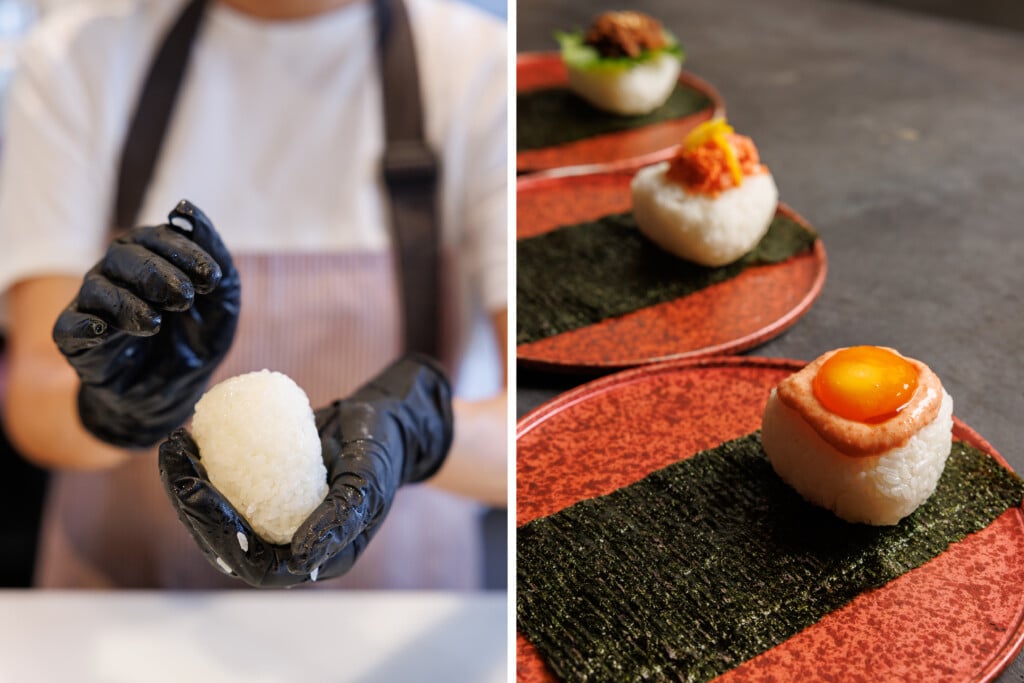
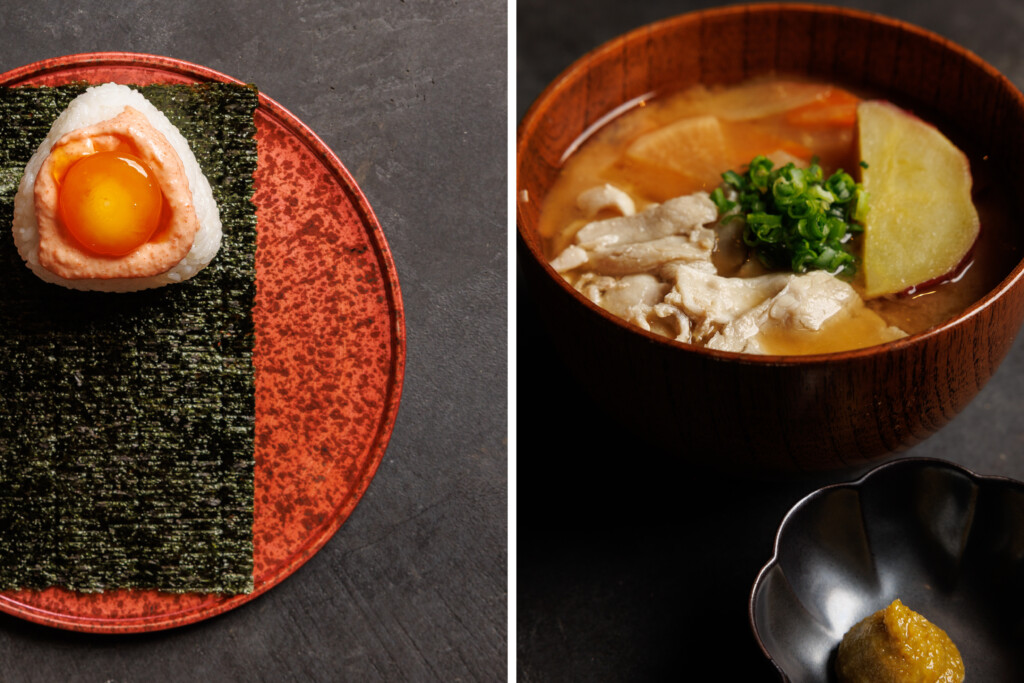

Is it musubi or onigiri?
What locals call musubi is essentially what many Japanese call onigiri—rice balls sheathed in crisp nori, with favorite fillings in the center. Different theories account for the dual nomenclature. The simplest is this: In western Japan, where most Hawai‘i Japanese trace their roots, rice balls are musubi, a word that means to tie. In the east, where Tokyo is, they are onigiri (to grasp or shape)—and since the Tokyo dialect is unofficially the Japanese standard, most Japanese know them as onigiri.

Tororo
Quirk abounds at Tororo. It’s Shiho Torimoto’s first restaurant, a homey izakaya named for a countryside dish very few people in Hawai‘i have heard of. Décor includes logos that feature an image of Torimoto, in cocktail dress and heels, frolicking in a glass of beer; and a rubber mask of a wrinkled, toothless, one-eyed man. “At midnight, if I’m here by myself, I put it on and it makes me feel better,” Torimoto says.
She opened in July in the space occupied for 50 years by Eastern Paradise Restaurant on South King Street. With no money for advertising, she turned to Instagram with $9.95 chirashi and miso soup sets limited to 10 a day, and created buzz—not just for the sushi bowls, but for her tororo, which found a small base of locals starved for cascades of snowy grated mountain yam drizzled with shoyu over rice. (You can find tororo at local izakaya, but almost always mixed with ‘ahi, okra, natto and a raw quail egg.)
Asked why the Kobe native chose to open in Hawai‘i, Torimoto answers matter-of-factly that it was here or Australia since she’s a scuba instructor. Her ultimate goal for this izakaya is to provide skills and training to survivors of human trafficking. “It’s going to take a while. Step by step,” she says.
A little over an hour before Tororo’s 6 p.m. opening, we’re the only ones there. Torimoto is short-staffed in the kitchen and dining room, so as owner and head cook, it’s not unusual for her to single-handedly cook, serve and chat up customers at the bar. Now, she glances at the time and murmurs, almost to herself, about starting the tonjiru. It sells out every night. With that gentle hint, our interview is over.
Izakaya at heart are about food, drink and relaxing. The best ones hold formality in check, seasoning an evening with easy banter and a feeling there’ll be a spot for you when you return. At Tororo, the menu is as unabashed as Torimoto: an arrangement of pickles, marinated shoyu butter potatoes lightly fried in a crisp crust, cold ginger shrimp on won ton chips, sushi rolls and hand rolls. Takoyaki are there, the stuff of street stalls and student budgets; and yukari fries seasoned with puckery shiso.
When I go back with friends and mention that the tonjiru sells out, three of us order it; when it comes, the fourth wishes he had too. The porky backbone of the miso soup is intense—pressure cooker intense—and the pale slips of meat are so plentiful amid the konnyaku and simmered root vegetables that at first glance, it looks like egg drop soup.
“Dou?” Torimoto emerges from the kitchen to ask how it is. “Hawai ichi,” I tell her—the best in Hawai‘i. “Hawai ichi!” she crows, in cocktail dress and heels, and throws back her head and claps.
Quirk and all, Tororo is a promising first step.
1405 S. King St., Ala Moana, (808) 810-2166, @tororo_24_hawaii


Don’t expect sushi
What are izakaya? Typically, they’re cozy pubs that serve small-plate otsumami, or bar snacks. What they aren’t are your obaachan’s one-size-fits-all Japanese restaurants. So while izakaya often feature sashimi, karaage fried chicken, grilled meats, mentaiko butter potatoes and other pūpū, here are some things you won’t find at izakaya in Japan: teishoku meal sets, ramen, udon, tonkatsu or sushi—all specialties of other Japanese eateries. Outside Japan, it’s a different story. All over the world, so many customers ask for sushi that not only do some izakaya in Honolulu have sushi counters, so do Thai restaurants in Florida, Vietnamese restaurants in South Africa, and the list goes on.
